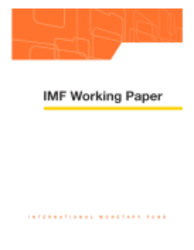
European Fiscal Harmonization and the French Economy
This paper examines the implications of European fiscal harmonization for the French economy using a general equilibrium model. The latter extends the overlapping generations simulation model of Auerbach and Kotlikoff in three ways. A well-developed external sector is included. Households face constraints in their borrowing. The population comprises "rich" and "poor" households with different labor productivities. The harmonization policy that involves cuts in VAT and savings taxes leads to welfare losses for both rich and poor approximately equivalent to one percent of GDP.
Publication date: October 1990
ISBN: 9781451949933
$15.00
Add to Cart by clicking price of the language and format you'd like to purchase
Available Languages and Formats
| English |
Prices in red indicate formats that are not yet available but are forthcoming.
Topics covered in this book
This title contains information about the following subjects.
Click on a subject if you would like to see other titles with the same subjects.
Economics- Macroeconomics , Taxation - General , taxation , tax cuts , tax rates , wage taxes , capital stock
Also of interest
Summary
Copyright © 2010 - 2025
Powered by:
AIDC



